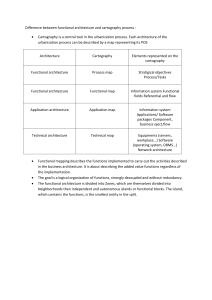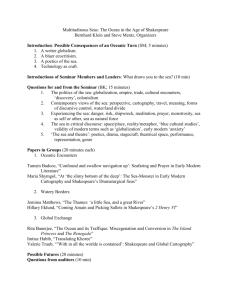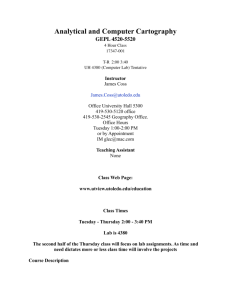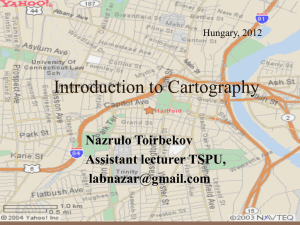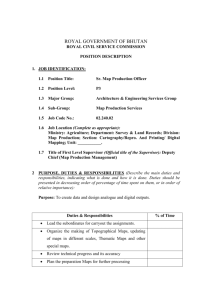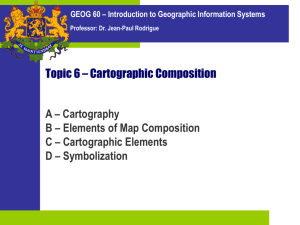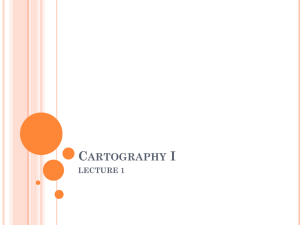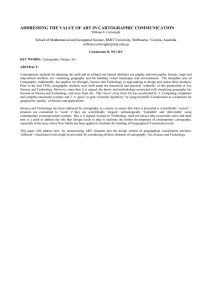2009-10
advertisement
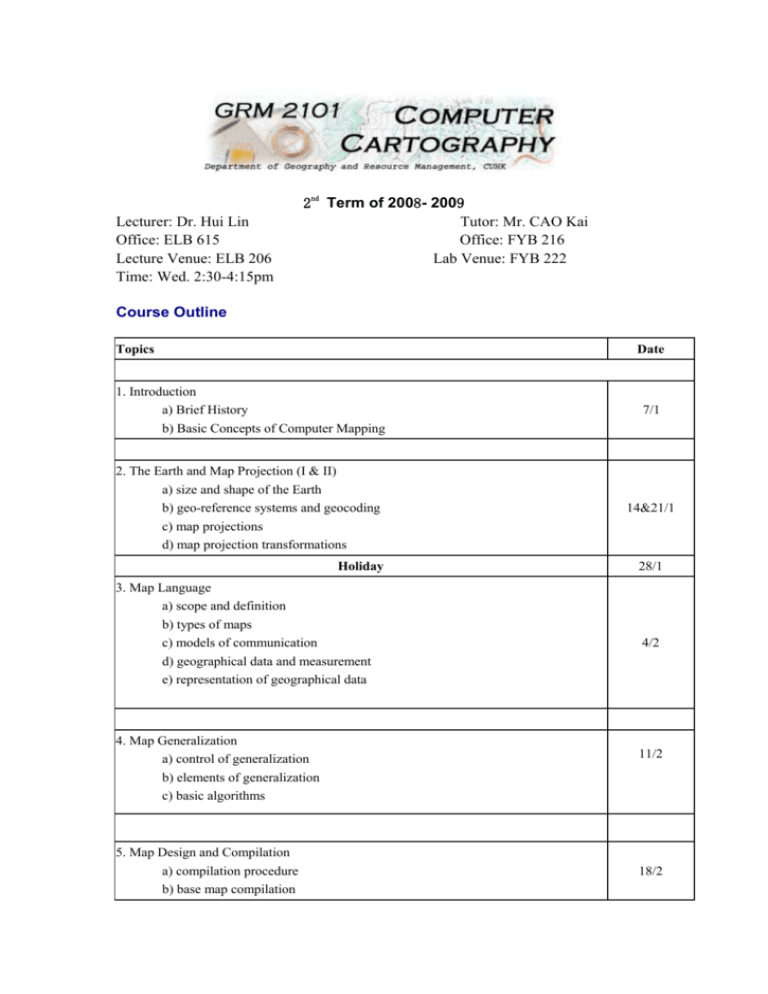
Lecturer: Dr. Hui Lin Office: ELB 615 Lecture Venue: ELB 206 Time: Wed. 2:30-4:15pm 2nd Term of 2008- 2009 Tutor: Mr. CAO Kai Office: FYB 216 Lab Venue: FYB 222 Course Outline Topics Date 1. Introduction a) Brief History b) Basic Concepts of Computer Mapping 7/1 2. The Earth and Map Projection (I & II) a) size and shape of the Earth b) geo-reference systems and geocoding c) map projections d) map projection transformations 14&21/1 Holiday 3. Map Language a) scope and definition b) types of maps c) models of communication d) geographical data and measurement e) representation of geographical data 4. Map Generalization a) control of generalization b) elements of generalization c) basic algorithms 5. Map Design and Compilation a) compilation procedure b) base map compilation 28/1 4/2 11/2 18/2 c) graphic, lettering, and color issues 6. Quantitative Symbolization (I) a) choropleth maps b) dynamic flow representation 25/2 7. Quantitative Symbolization (II) a) dot maps b) graduate symbol maps 4/3 8. Geo Visualization Issues 11/3 9. Mobile Cartography 18/3 10. Group Discussion on Map Design 25/3 11. Virtual Geographic Environments 1/4 12. Project Presentation (I) at FYB 222 8/4 13. Project Presentation (II) at FYB 222 15/4 Learning Outcomes This course introduces basic knowledge on map design and production, supported by computer hardware and computer mapping software. Learning Activities This course is provided through a combination of lectures and laboratory based tutorials. Lectures are entirely given by the teacher and tutorials are arranged by teacher and tutor. The tutor conducts the tutorials with supervision from the teacher. In lectures, teacher discusses the basic concepts with various visual materials including slides and video tapes. In tutorials, students will use personal computers equipped with computer mapping software. Four tutorials are organized for each student. Each of the tutorials is arranged to follow the related lecture. A mark is given for each student of his or her performance on the tutorial assignments, and this will be counted towards the total grade of the course, accounting for 40 percent. Course Assessment Apart from tutorial assignments (40%), students are assessed by a final project (20%) and the final examination (40%). The final project starts on March 5, 2008 and is due on April 9, 2008. The teacher sets the questions of the final examination, marks the answers from students and integrates with other components of assessment to arrive at a final mark and grade for each student. Textbook (limited copies available from university bookstore) Dent, B.D., 2009, Cartography -Thematic Map Design, 6th edition. Dubuque, IA: Wm. C. Brown Publishers. Lecture Notes and Lab handout All lecture notes and lab hand-outs are available to students in the course homepage at http://www.cuhk.edu.hk/webct/ Login by using the computing id (e.g. s031234) and mailserv password. Please remember that all materials in the homepage can ONLY be used by staff and students in the captioned course for teaching/learning purpose. Laboratories Laboratory hours will be Monday 1:30-4:15 pm. All students are required to participate in these laboratory practices. 1. 2. 3. 4. 5. Introduction to mapping software & map projection and transformation (Feb. 3) Map digitizing & data management (Feb. 17) Dot maps and unique value maps (Mar. 3) Choropleth map design using & put thematic map on google earth (Mar. 17) Mobile Cartography (Mar. 31) Reading list (Reserved in Chung Chi Library - daily) Clark, K.C. 1995. Analytical and Computer Cartography. Englewood Cliffs, NJ: Prentice-Hall, Inc. Dent, B.D. 1993. Cartography -Thematic Map Design, 3rd edition. Dubuque, IA: Wm. C. Brown Publishers. Keates, J.S. 1989. Cartography Design and Production. 2nd edition, London: Longman. Monmonier, Mark, 1991, How to Lie with Maps, The University of Chicago Press. Muehrcke, P.C. 1992. Map Use - Reading, Analysis, Interpretation, 2nd edition. Madison, WI: JP Publications. Robinson, A., et al., 1995, Elements of Cartography, sixth edition, John Wiley & Sons, Inc.
